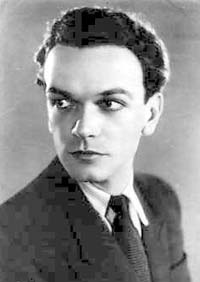
| Проекты: |

|
 |

|
| · Сделать стaртовой · Добавить в избранное · | Поиск знаменитостей: |
 Меню: Меню:
 Реклама: Реклама:
 Программа ТВ: Программа ТВ:
|  Франсис Пикабиа / Francis Picabia Франсис Пикабиа / Francis Picabia
Краткая биография: Дата рождения: 1879 - 1953 Francis Picabia was born in Paris in 1879 into a family of mixed parentage, French mother and Spanish father. He studied at the Ecole des Beaux-Arts and at the Ecole des Arts decoratifs of Paris. Up to 1908 he painted landscapes in the manner of Corot and the Impressionists, especially Sisley (Landscape/Paysage, Riverbank / Riviere, Bank at Poissy / Bords de l'eau a Poissy.) Then, influenced by Matisse's Fauvism on one hand, and by Cubism of Braque and Picasso on the other, he tried to combine both movements and created bright-colored Cubists pictures unlike the somber monotone paintings of Cubism founders. (Young Girl/Jeune fille, Star Dancer on a Transatlantic Cruise / Danseuse etoile sur un transatlantique). In 1910 Pucabia met the Duchamps brothers, Marcel Duchamp, Raymond Duchamp-Villon and Jacques Villon, and Guillaume Apollinaire. The friendship with Marcel Duchamp (1887-1968), a pioneer in the use of ready-made art, and G. Apollinaire, an Avant-garde poet and critic, significantly influenced Picabia's following works. In 1913, Picabia went to the United States for the first time and showed his abstract paintings at the international exhibition "Armory Show." The pictures had success and brought him fame. During his second stay in NY in 1915, together with Marcel Duchamp and painters of American Avant-garde, they formed the NY society of Dadaists. The group published the periodical 291, to which Picabia contributed. On January 25th, 1917, Picabia published the first number of his periodical, which he called 391 to remind of the American group's 291. In 391 he published his first "Mechanical Drawings". Leaving away the geometrical abstractions, Picabia started a series of compositions, in which colored copies of technical drawings suddenly obtained shapes of human figures (Ici, C'est Ici Stieglitz. 1915; Young American Girl in a State of Nudity, 1915; Parade Amoureuse, 1917). These "mechanomorphs" full of humor, teasing Dadaist sarcasm, demonstrate the paradox of visual perception, which could find a mimesis image in an abstract technical drawing. In the same year he went to the USA once more and there published further numbers of his periodical, assisted by Marcel Duchamp. In Europe 391 was published until 1924. In 1918 Picabia moved to Switzerland, where he joined the Zurich group of Dadaists and published a book entitled "Poemes et dessins de la fille nee sans mere" ("Poems and Drawings of the Girl Born without a Mother"). He took active part in the activities of the group and went on with his "mechanomorphs" (Infant Carburettor, 1919). He contributed to "Dada" issues. In 1920 he published a periodical, "Cannibale", and in 1921, together with Breton and others, he dissociated himself from "orthodox" Dadaists and switched his allegiance to Surrealism. In the beginning of the 1920s Picabia was interested in 'constructing' collages, for which he used all kind of materials (Feathers. 1921; Straw Hat. 1921, Woman with Matches. C. 1923-24). In 1927 Picabia's period of so-called 'transparencies' started. The artist was looking for alternative methods to depict three-dimensional space without traditional rules of perspective. He developed this approach in his works, in which flat images of different scales overlay and interlace to show an object from a variety of viewpoints. When an eye accommodates to intersections of different planes and foreshortening, an illusion of three-dimensional space really appears. ( Hera. c. 1929, Adam et Eve. c. 1931). In 1934, the transparent images were forced out by heavy brutal shapes of pseudo classicism. Exaggerating the manner of the self-taught Primitivists and Kitch stylistic, Picabia parodied the "high" genres of allegory, portraiture and Mythological scenes (Spanish Revolution, 1936; Self-Portrait, c. 1940, Nudes on a Sea Beach, 1941). During the World War II (1939-45) Picabia lived in Switzerland and in the south of France. After the end of war he returned to Paris, where he came into contact with the Existensialists. In his late works abstractions alternate with the grotesque. Picabia also worked for the theatre, designed decorations for festivals and Gala-shows. He left literary works - poems and verses, art critics, articles on theory of art. Picabia's art is appreciated by those who like irony, play of words, combination of different styles and modi. Актерские работы:
|  Фото дня: Фото дня:
 Реклама: Реклама:
 У нас на сайте: У нас на сайте:     
|